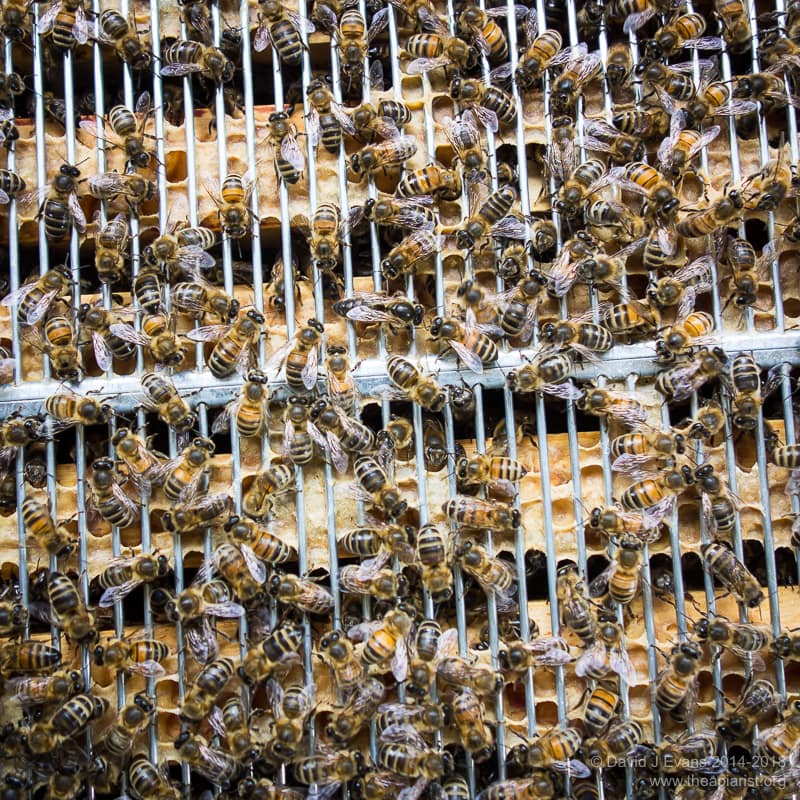Spot the queen part 3
In beekeeping courses you’re always taught to look carefully at the underside of the queen excluder (QE) when removing it incase the queen is there. If she’s not you can then gently place it to one side and start the inspection.
It sometimes also pays to look at the top of the QE …
I inspected this colony last Sunday and my notes said something like “beautifully calm, behaving queenright but looking queenless … frame of eggs?”. The colony was on a single brood with a QE and one super, topped with a perspex crownboard. The ‘frame of eggs’ comment indicated I thought it would be wise to add a frame of eggs to the colony – if they were queenright they’d simply raise them as worker brood. However, if they were queenless they’d use them to raise queen cells.
I was running out of time and anyway wanted eggs from a colony in a different apiary. If the colony were going to raise a new queen I wanted it to come from better stock. Alternatively, I’d wait and provide them with one of a recent batch of mated queens once they had laid up a good frame or two to demonstrate their quality. I closed them up and made a mental note to deal with the colony later in the week.
If they behave queenright, perhaps they are …
I peeked through the perspex crownboard this afternoon while visiting the apiary and saw a distinctive looking bee walking about on the underside of the crownboard. Despite being upside down it was clear, even with a very brief view, that it was a small, dark queen. She was walking calmly about the super and wasn’t being hassled by the workers.
I strongly suspected that she was a virgin that had either wiggled through the QE – perhaps it’s damaged or she was particularly small at emergence – and then got trapped. Alternatively, and perhaps more likely, I’d inadvertently placed a brood frame near the super during a previous inspection and she’d walked across. This colony is in the bee shed and space is a bit cramped during inspections.
I know from my notes that the colony had an unsealed queen cell in it a couple of weeks ago so – weather permitting – there should still be sufficient time to get her mated before she’s too old. I removed the super, located her on the QE, gently lifted her off and placed her in the brood box. She wandered quietly down between the brood frames and the bees didn’t seem at all perturbed.
Fingers crossed …

Join the discussion ...